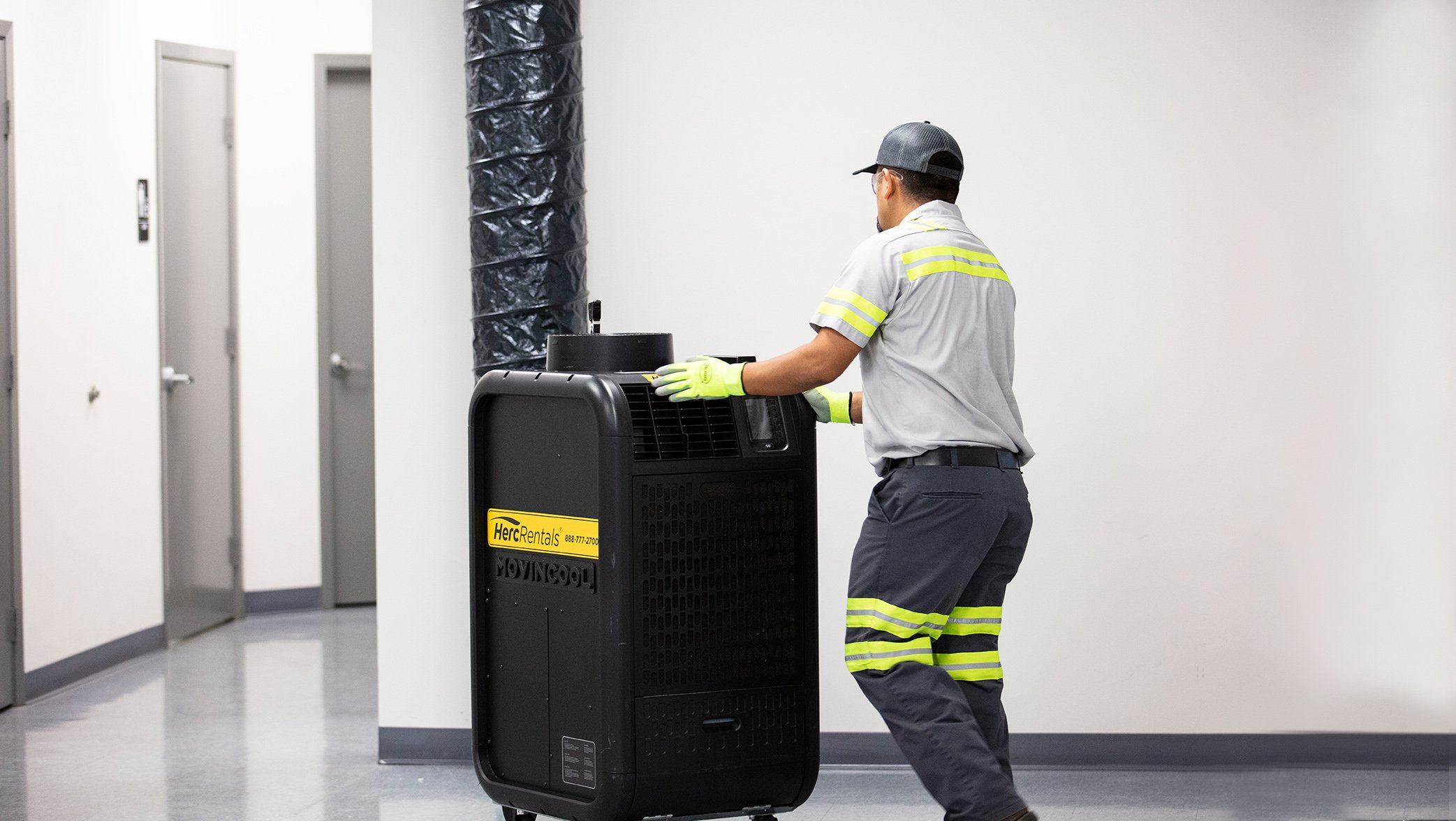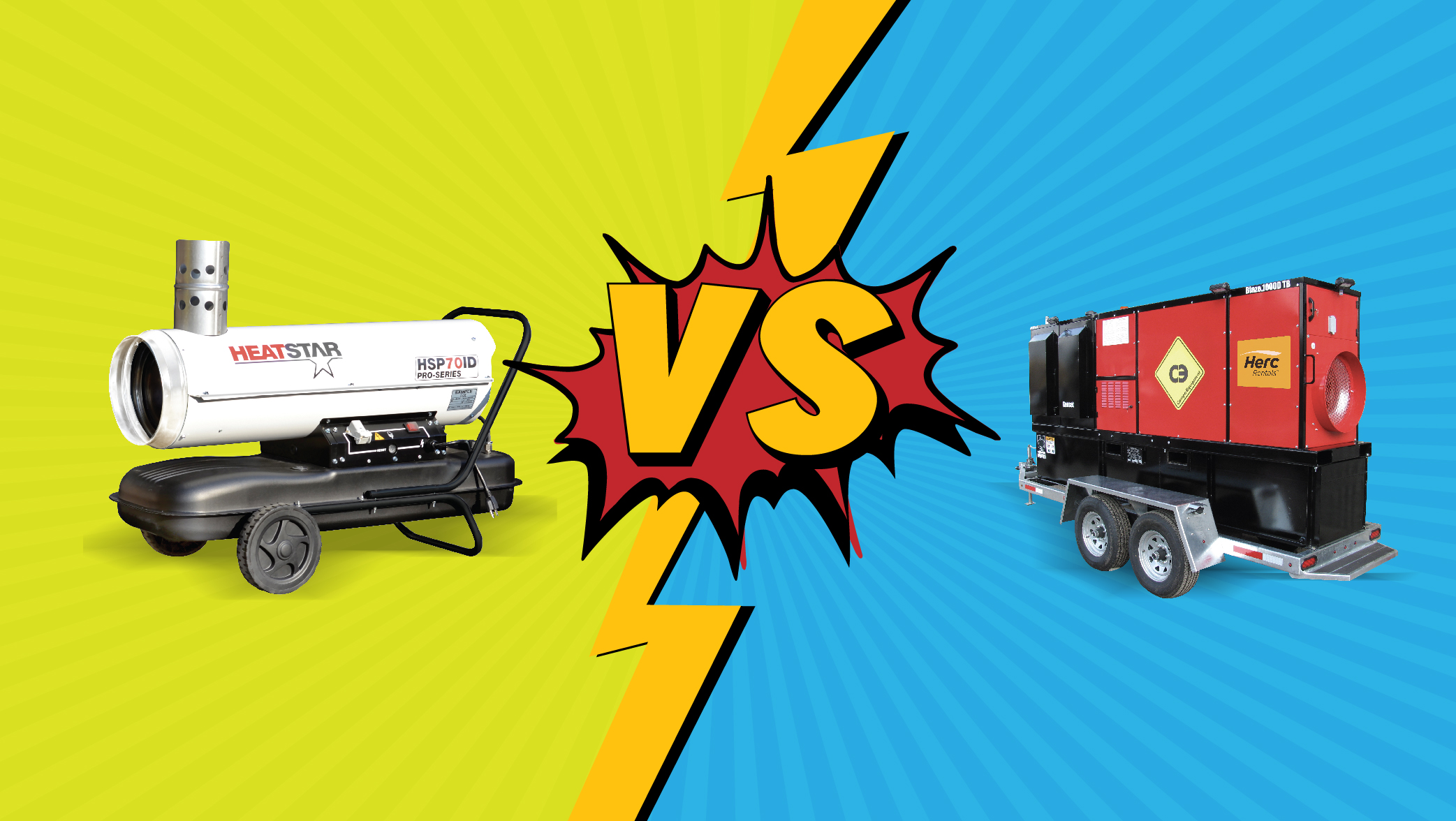Keeping workers safe and warm should be a top priority for business owners and contractors during winter’s most wicked days and nights.
Every year, workers die from carbon monoxide poisoning, usually while using fuel-burning equipment in buildings or semi-enclosed spaces without adequate ventilation. But without heat in the grip of winter outdoor workers and those working in semi-enclosed buildings would be susceptible to hypothermia and frostbite.
To combat the cold and protect workers from carbon monoxide poisoning, business owners and contractors need to understand the pros and cons of the two most commonly used mobile heaters.
Most business owners and contractors will use one of two types of heaters – direct or indirect fired heaters. While both types of heaters do the same thing ― heat the air and keep work stations comfortable ― each have their own benefits and work better in different situations.
DIRECT FIRED HEATERS
Direct fired heaters, like the Flagro F-1500T, Heatstar HS3500DF or the Dewalt DXH190HD, are similar to gas grills where the flame comes into direct contact with the air. Sometimes known as a torpedo or salamander heater, direct fired heaters are often less expensive and more efficient to run than indirect fired heaters because they convert nearly 100 percent of liquid propane or natural gas into usable heat.
While direct fired heaters feature a smaller footprint and are easy to move, set up and adjust, their open flame and blower design means they can’t be used with ductwork. Instead, they’re typically set up and used in open air locations or buildings with large open spaces like construction sites, warehouses, indoor and outdoor sports arenas, car dealerships’ service bays, car washes and more. Direct fired heaters are designed to heat spaces varying in size from 2,875 square-feet up to 19,000 square-feet.
INDIRECT HEATERS
Indirect fired heaters, on the other hand, operate like a mobile furnace and are more complex. Powered by oil, diesel, propane, natural gas or dual fuel, these heaters, which are usually set up outdoors, draw fresh, outside air through intake vents. The air then passes over the burn chamber where it’s heated and forced by blowers into a building through ducting. The heater’s unwanted fumes are expelled through a “chimney.” While this process greatly reduces safety concerns related to carbon monoxide poisoning, operators can also expect an estimated loss of fuel efficiency when compared to direct fired heaters.
Indirect fired heaters like the Flagro FVO-400RC or Campo EB600G are mostly used for warming offices, manufacturing facilities and schools because no combustion by-products are introduced into the airstream.
SO WHICH HEATER IS RIGHT FOR YOU?
- Indirect fired heaters are designed to keep carbon monoxide, carbon dioxide and nitrogen dioxide outside a space by redirecting toxic fumes through a chimney or stack. That makes them safe to use indoors and in tight spaces – if you have an exhaust outlet.
- Excess humidity coming from direct fired heaters can create drying and curing problems and, in extreme cases, lead to mold development. Not so with indirect fired heaters. These heaters, because of their use of drier air, help speed up some construction tasks like the curing of concrete.
- Safety always comes first so small, enclosed spaces without means to expel potentially deadly fumes are no place for a direct fired heater. However, if your employees are working in a large or well-ventilated space, the simplicity and cost-savings in terms of fuel efficiency from direct fired heaters will be substantial.
Safe, comfortable working conditions are paramount no matter what time of year, but the winter months create a different set of challenges for business owners, contractors and workers in the field. For more heating information, click HERE.


